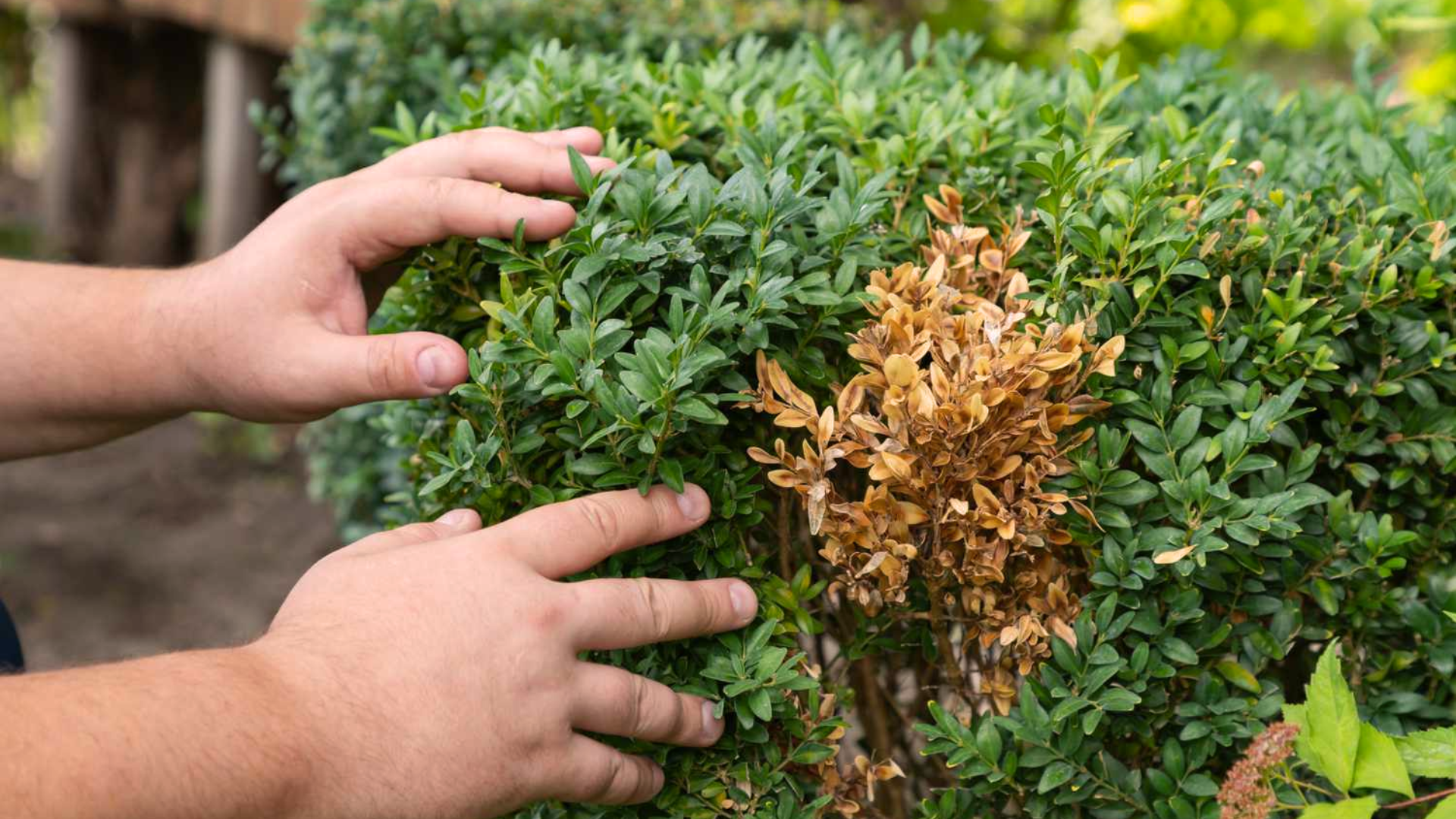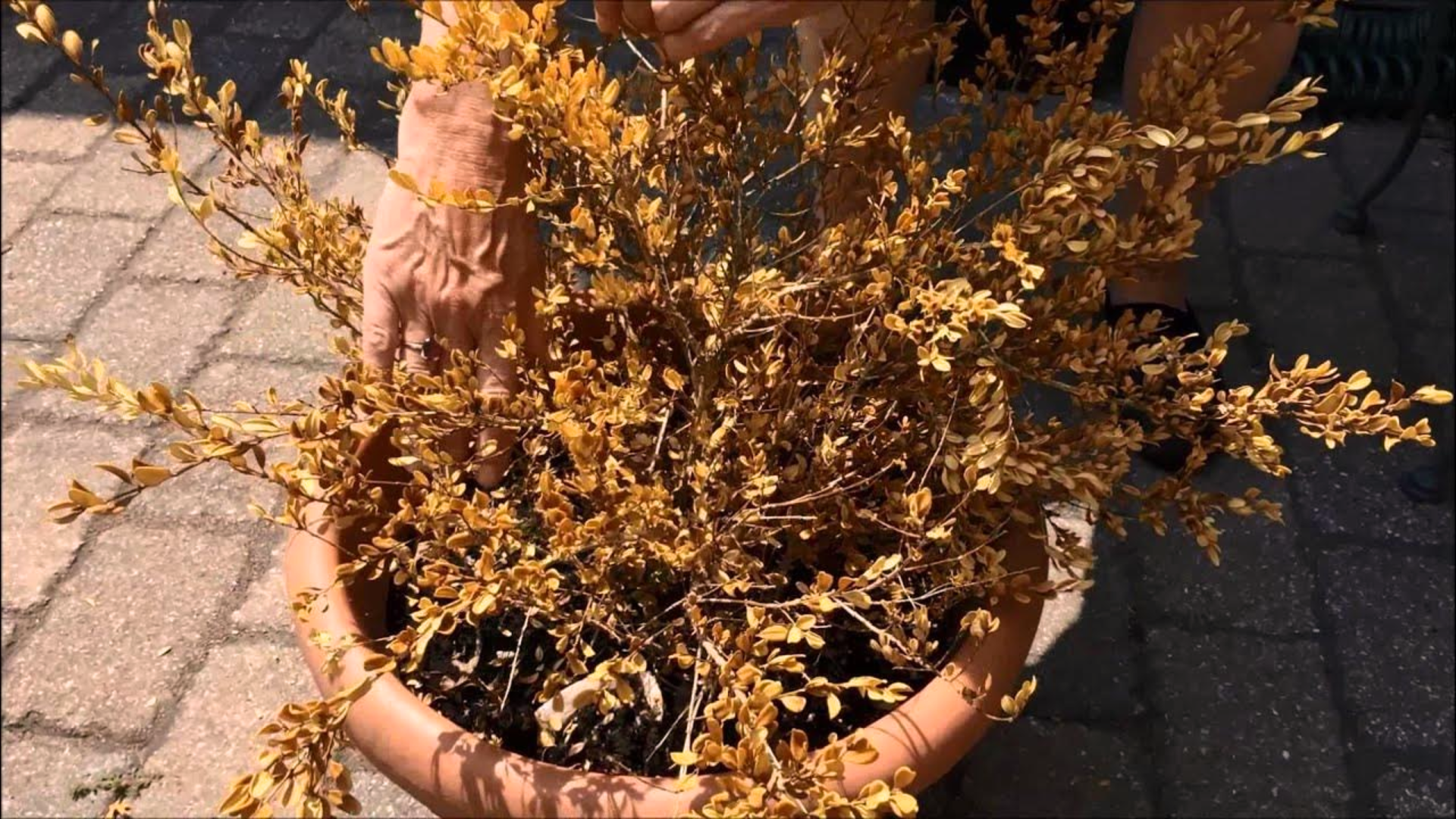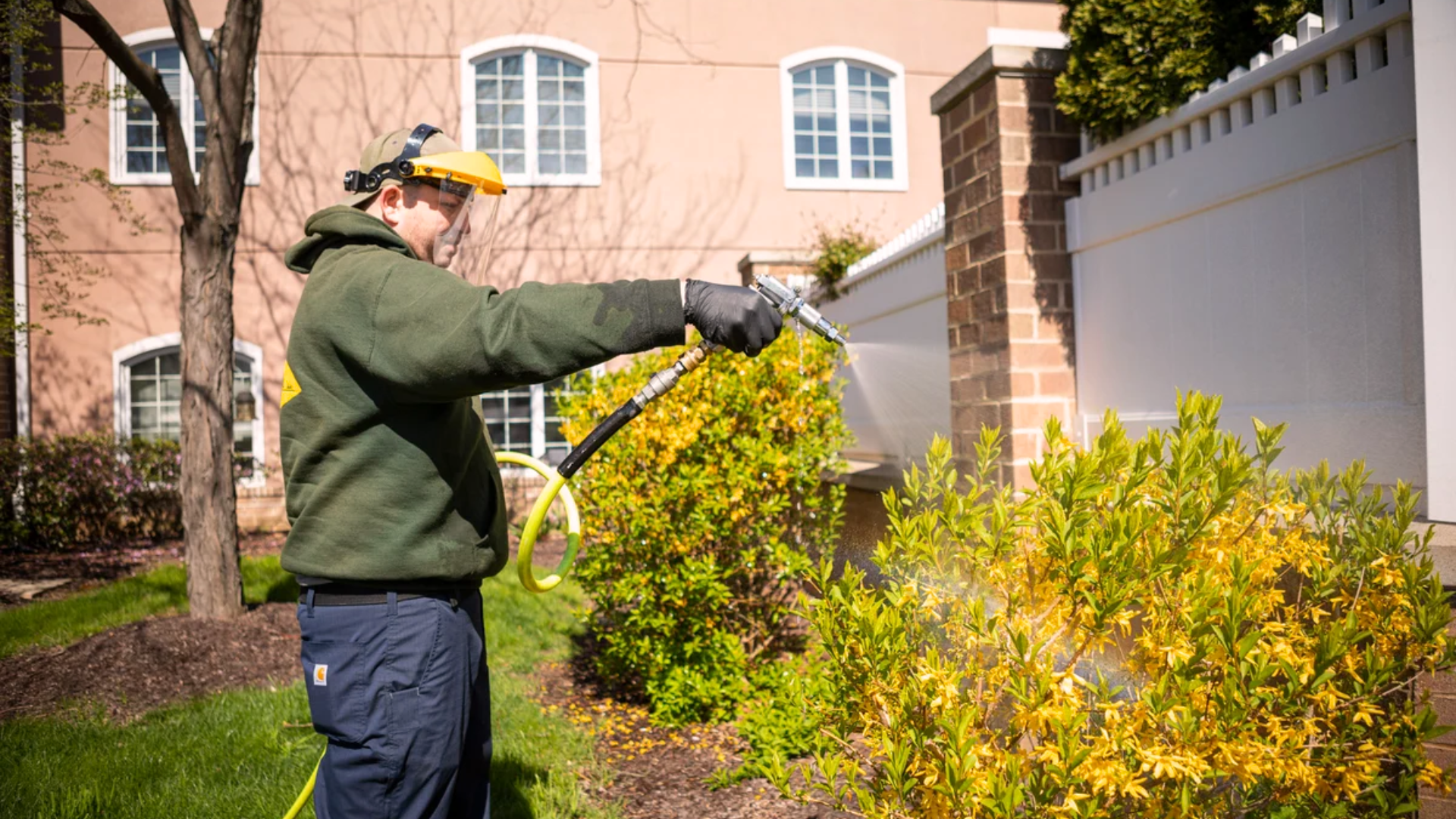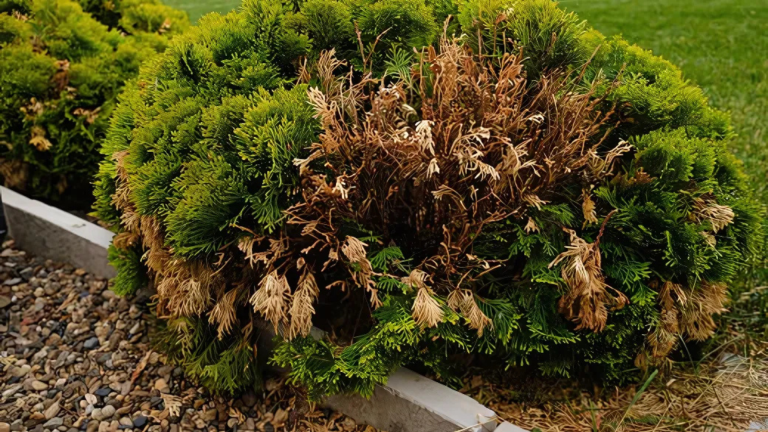Is your once-healthy shrub starting to look sad? Brown leaves, wilting branches, and sparse growth can make any gardener worry. Don’t give up on your plant just yet!
In this blog, you’ll find practical steps to bring your shrub back to life. We’ll cover common reasons why shrubs decline and show you how to fix each problem.
With over years of gardening experience, I’ve saved countless plants that seemed beyond help. The methods in this guide have worked for hundreds of home gardeners with various shrub types.
I wrote this guide specifically for busy people who want clear, simple solutions without complicated terms or expensive products.
By the end of this blog, you’ll know exactly what’s wrong with your shrub and how to make it healthy again.
Spotting the Signs: Is Your Shrub Really Dying?

What a Dying Shrub Actually Looks Like
When I check plants in my garden, I look for clear signs of trouble. A dying shrub shows several warning signs at once. Brown, crispy leaves that fall off easily are a bad sign. The branches might feel brittle and snap rather than bend.
You’ll often see the whole plant looking thin with few leaves. The bark may peel or crack in unusual ways. Sometimes you’ll notice a gray or dull color replacing the healthy tones of the plant. Water stress shows up as yellowing leaves. Pest problems often cause spots, holes, or sticky residue on the foliage.
Differences Between Dead, Dormant, and Stressed Shrubs
| Feature | Dead Shrubs | Dormant Shrubs | Stressed Shrubs |
|---|---|---|---|
| Scratch Test Results | Brown and dry underneath | Green tissue underneath | Partially green tissue |
| Branch Flexibility | Snap easily | Remain flexible | A mix of flexible and brittle |
| Leaf Condition | No leaves or all brown | No leaves (seasonal) | Yellowing or dropping |
| Response to Care | No improvement | Revives when conditions change | Partial recovery possible |
| Growth Status | No new growth | Paused growth | Slow or stunted growth |
The scratch test is the simplest way to check your shrub’s condition – green underneath means life, while brown throughout indicates death in that section.
Signs of Life to Look For
Before giving up on your shrub, check for these hopeful signs:
Green stems are the most reliable indicator that your plant is alive. Even if the leaves look terrible, green tissue under the bark means recovery is possible.
Look closely at the base of the plant for new shoots pushing up from the ground. Many shrubs can regrow from their roots even if the top growth seems dead.
Check the root firmness by gently digging around the base. Healthy roots feel firm and usually have a light color inside. If they’re mushy, black, or smell bad, root rot might be the problem.
Sometimes life hides in unexpected places. I once saved a shrub that seemed completely dead above ground but had one tiny green shoot coming from the roots!
Get to The Root of The Problem

Check Soil Moisture and Drainage
I always start with water issues when a shrub looks sick. Too much or too little water causes most plant problems. Put your finger about 2 inches into the soil near your shrub. If it feels bone dry, your plant needs a drink. If it feels soggy, you might be overwatering.
Poor drainage kills shrubs fast. After a heavy rain, check if water pools around your plant for more than an hour. This suggests the soil doesn’t drain well. Shrubs can’t breathe in waterlogged soil, and their roots suffer.
Look for Root Rot or Compacted Soil
When I suspect root problems, I carefully dig around the base of the plant. Healthy roots look firm and light-colored inside. Root rot shows up as dark brown or black roots that feel mushy and smell bad.
Compacted soil feels hard to the touch and restricts root growth. Try pushing a garden fork into the soil around your shrub. If you struggle to push it in, your soil is too compact. This stops air, water, and nutrients from reaching the roots.
Test pH and Nutrient Levels if Possible
Soil pH matters more than many gardeners realize. Most shrubs prefer soil that’s slightly acidic to neutral (pH 6-7). When the pH is wrong, plants can’t absorb nutrients even if they’re present in the soil.
Signs of nutrient problems show in the leaves. Yellow leaves often mean a nitrogen shortage. Purple-tinged leaves might indicate phosphorus problems. Brown leaf edges could suggest potassium issues.
Prune Away the Dead Weight
Removing dead or sick branches helps your shrub put energy into healthy growth. I always prune when I see branches that are clearly dead (no green inside when scratched). The best time to prune most shrubs is during late winter or early spring before new growth starts.
To prune correctly, make clean cuts at a 45-degree angle just above a healthy bud or branch junction. Don’t leave stubs, as these can invite disease. Remove the worst branches first, then step back and look at the overall shape before continuing.
Pruning tells your plant to grow new shoots. When you cut a branch, the shrub responds by activating dormant buds below the cut. This often results in fuller, healthier growth over time.
Always use clean, sharp tools to avoid spreading disease. I wipe my pruners with rubbing alcohol between cuts if I’m working on an obviously sick plant. Sharp tools make cleaner cuts that heal faster. Ragged cuts from dull tools create entry points for pests and disease.
Watering Wisely: What Your Shrub Actually Needs

I’ve found that deep, thorough watering works much better than frequent light sprinkles. When you water deeply, the moisture reaches all the way to the bottom of the root zone. This encourages roots to grow deeper, making your shrub stronger during dry spells.
Water early in the morning when possible. Morning watering gives plants time to dry before evening, which helps prevent fungal problems. The cooler morning temperatures also mean less water is lost to evaporation.
Common watering mistakes can really hurt your shrubs. Wetting the leaves instead of focusing on the soil can promote leaf diseases. Setting automatic sprinklers to run too often leads to shallow roots. Inconsistent watering (letting soil completely dry out, then flooding it) stresses plants badly.
I check the soil with my finger before watering. If it feels damp 2 inches down, I wait another day. Most established shrubs need about 1 inch of water per week, but this varies with weather, soil type, and plant species.
Choosing the Best Fertilizer for A Comeback
When helping a sick shrub recover, I avoid strong fertilizers that might burn already stressed roots. Gentle, slow-release options work best for weak plants. Look for products labeled for use on “stressed” or “recovering” plants, as these contain milder formulations.
Feed your struggling shrub only when it shows signs of new growth. Early spring is often a good timing, but watch the plant for cues rather than following a strict calendar. Apply less than the package recommends at first—about half strength is a safe bet.
For organic choices, I like compost tea, worm castings, or well-rotted manure. These build soil health while gently feeding plants. They’re less likely to harm your shrub if you accidentally use too much.
Synthetic fertilizers work faster but require more care. If using these, choose a balanced formula with equal numbers (like 10-10-10) or one with a higher middle number for root growth (like 5-10-5). Always water thoroughly after applying any fertilizer to help it reach the roots.
Don’t Rush It: Good Growth Takes Time

Plants heal at their own pace, and this isn’t something we can rush. In my years of gardening, I’ve learned that shrubs often need a full growing season to show real recovery. The first signs might be small—tiny leaf buds or slightly greener stems—but these modest changes are worth celebrating.
Keep track of your shrub’s progress with photos taken every two weeks. This visual record helps you notice small improvements that might otherwise go unnoticed. I like to measure and record the length of new shoots too. Sometimes growth is happening, but it’s so gradual that we miss it without tracking.
Not every shrub can be saved, and that’s okay. If, after 3-4 months of good care, you see no signs of life, it might be time for replacement. Other signs it’s time to replace include: more than 75% of branches remaining dead, severe trunk damage, or roots that are mostly rotted.
The choice to replace becomes clearer when you consider the shrub’s value and purpose in your garden. Some special or expensive varieties deserve extra patience. But sometimes, planting a healthy new shrub is the best option, especially if the current one would take years to look good again.
Conclusion
Bringing a shrub back from the brink takes patience and consistent care. Start by correctly identifying the problem—check soil moisture, look for root issues, and examine overall plant health. Prune dead portions, water properly, and use gentle fertilizers only when needed.
Remember that recovery happens gradually. Your shrub didn’t get sick overnight, and it won’t heal that way either.
I still lose plants sometimes, despite years of gardening experience. Every plant death teaches me something valuable. If your shrub doesn’t make it, don’t be too hard on yourself.
Keep notes about what worked and what didn’t. This information helps with future plant problems and makes you a better gardener over time.
The most important thing is to stay observant and responsive to your plant’s needs. With the right care and a bit of luck, many shrubs can return to full health and beauty in your garden.














2 Responses
So I have three round shrubs on the side of my house they have been really good for the last 5 years I’ve pruned them in the fall I haven’t done it yet because it’s still too warm but I noticed the other day I have three branches in my first one that are completely Brown I do have a lot of spiders on them that happens every year I don’t worry too much about it cuz I’ve never had the brownness before I was just wondering if I could send a pictures so that you could see what is going on and maybe give me some advice
Good work Randy